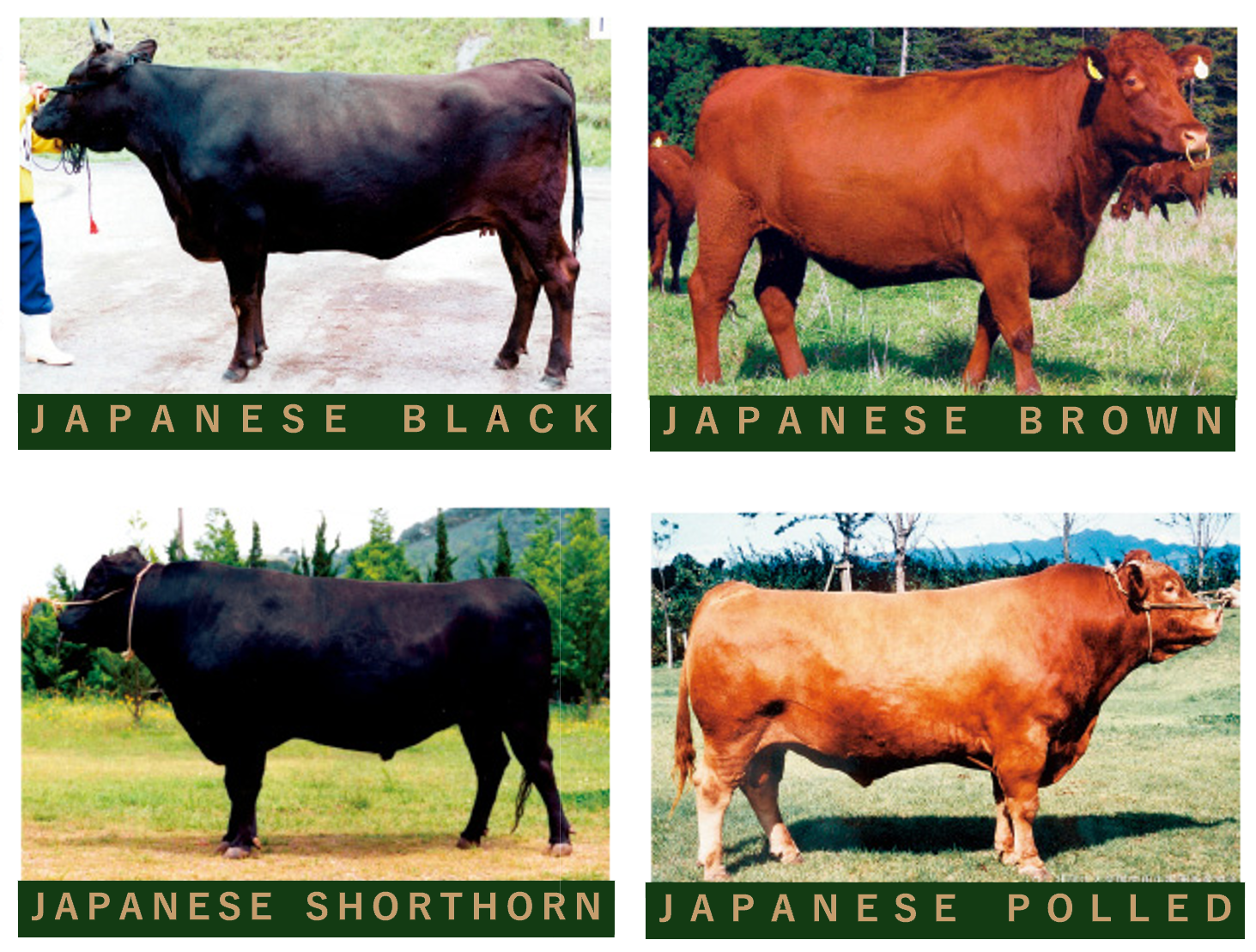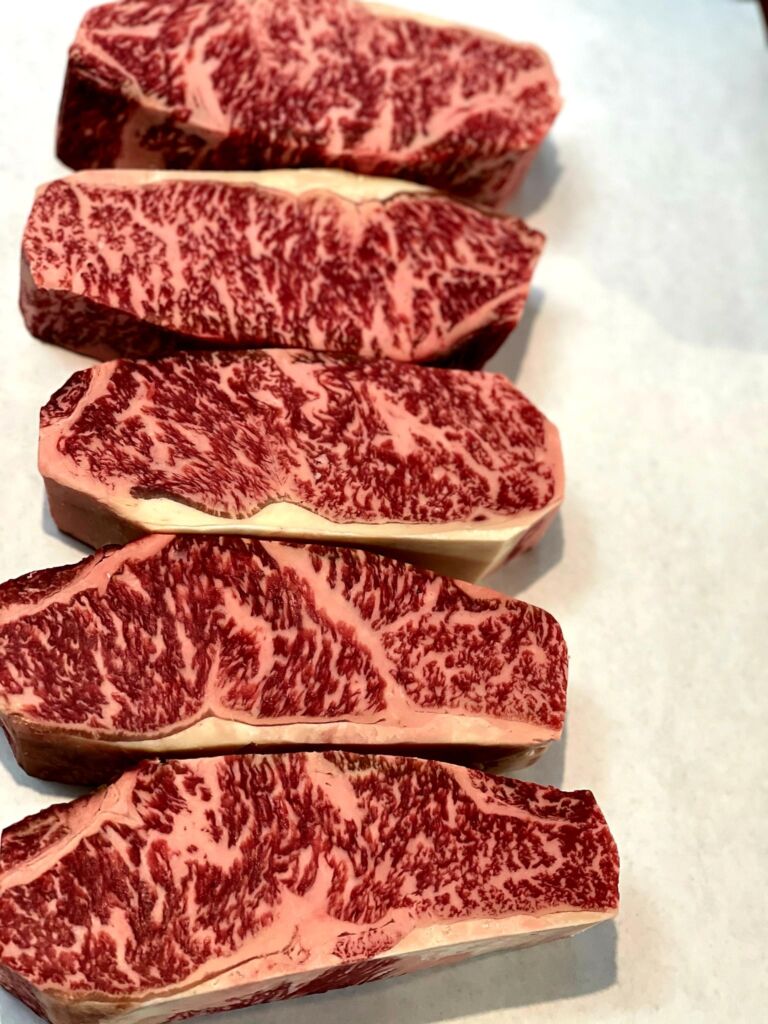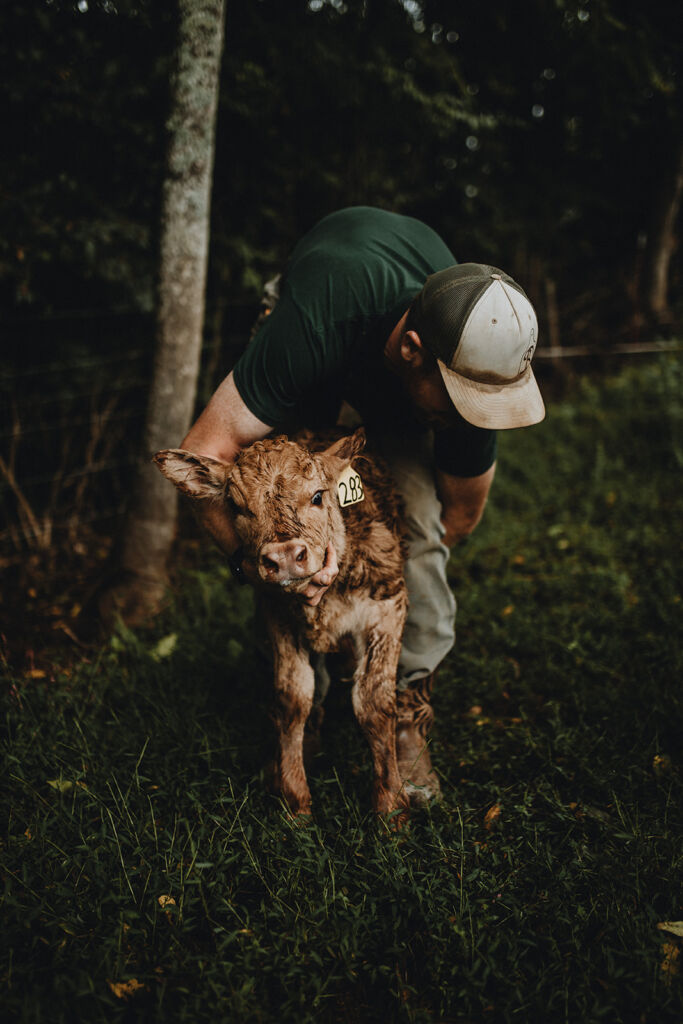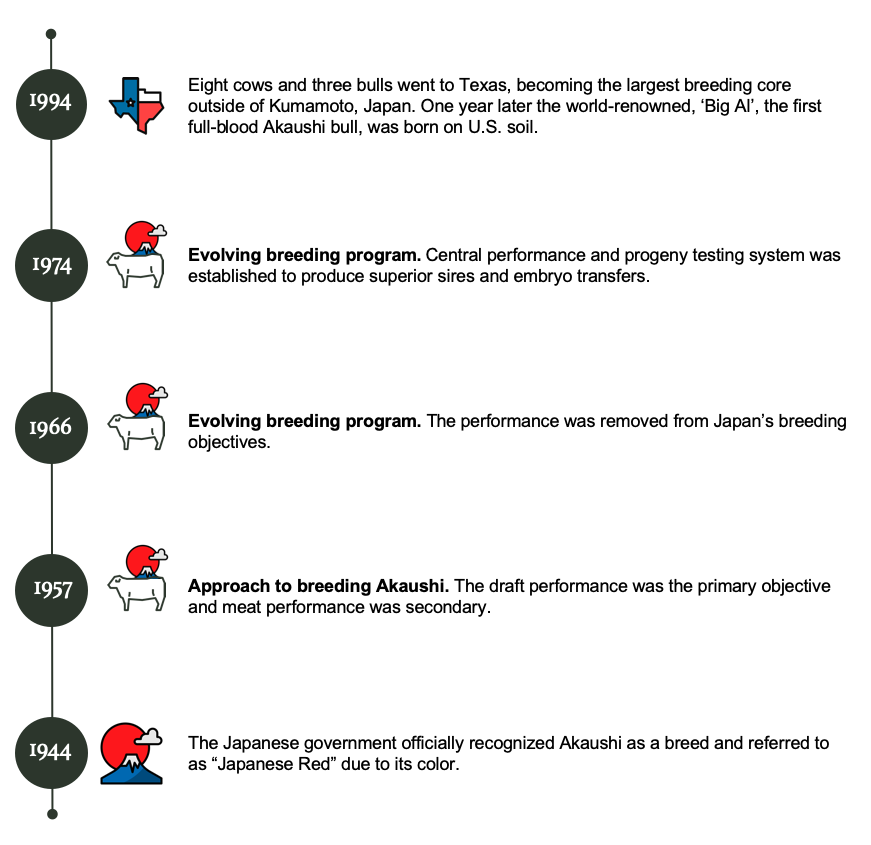Akaushi beef is a Japanese cattle breed that is growing in popularity in the United States. The Akaushi breed is also known as ‘Red Wagyu’ or ‘Japanese Brown.’
Akaushi beef is often seen as a color variation to the Black Wagyu, many other points of difference, making this breed stand out from the pack.
- Akaushi are hardy
- Heat tolerant
- Gain weight quickly and efficiently
- Efficient in the feedlot
- Produce flavorsome beef with intense marbling
- Less trim fat than other breeds
- Heart-healthy fat
We here at Sixteen Peaks are committed to preserving the pure Akaushi bloodlines. Maintaining pure bloodlines is achieved by replicating Japanese production systems, management practices, and breeding programs.
What Is The Difference?
Wagyu vs. Kobe vs. Akaushi beef
Wagyu means Japanese cow or cattle. Often there is a misconception that Wagyu is a breed of beef or a term used to define a higher quality of meat.
Wagyu – aka Japanese – cattle comes from different cattle breed strains. Since the late 1800s, these breeds evolved when several European cattle species were brought into Japan and cross-bred with native breeds. These include:
-
Japanese Black – Originally raised to work as cattle. This breed is renowned for its intense marbling.
- Japanese Brown – A leaner and healthier breed of cattle with a light and mild taste.
-
Japanese Shorthorn – A lean breed rich in inosinic and glumatic acid, prized for its savory flavor.
-
Japanese Polled – Lean and known for its game texture and rich, meaty taste.

Benefits of Akaushi Beef
Sixteen Peaks believes that Akaushi beef delivers critical qualities to meet modern-day consumer needs – a succulent, tasty, yet healthy steak.
Akaushi beef’s marbling qualities meet the U.S. Department of Agriculture (USDA) Prime grade standards. Its high percentage of fat content creates a tender steak with that buttery flavor people are chasing.
The point of difference is that Akaushi cattle contain a higher concentration of monounsaturated fat relative to saturated fat.
What does all this mean? It means the beef is composed of more ‘good’ fats that are quickly metabolized and have less ‘bad’ fat that builds up around internal organs and can cause health problems.
To summarize, Akaushi beef lowers cholesterol and contributes to weight loss.


Benefits Breeding Akaushi
The team at Sixteen Peaks is committed to preserving pure Akaushi bloodlines. Maintaining pure bloodlines is achieved by replicating Japanese production systems, management practices, and breeding programs.
This commitment means ranchers can take comfort in knowing they will receive cattle that have a reputation for:
- Being hardy
- Longevity
- High fertility (high milk production)
- Ability to adapt to various climates and tolerate heat
- Gaining weight quickly and efficiently
- Producing flavorsome beef with intense fat marbling
- Producing less trim fat than other breeds (carcass merit).
Akaushi's History in the United States


